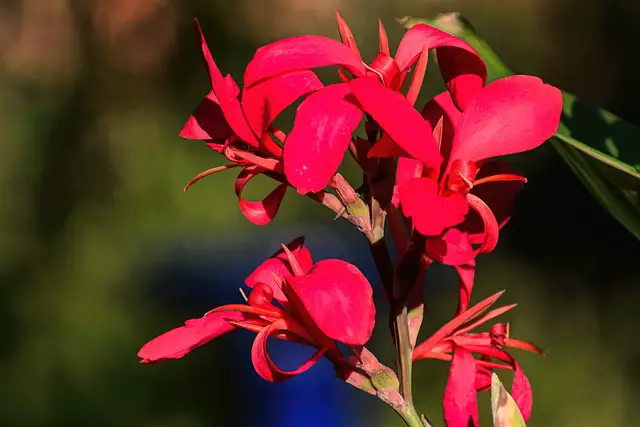Canna lilies are a beautiful addition to any garden, but when their leaves start to turn brown, it can be concerning. There are several reasons why canna lily leaves may turn brown, and it’s important to recognize the problem early to prevent further damage.
Overwatering is a common cause of brown canna lily leaves. These plants thrive in moist soil, but excessive water can lead to root rot, resulting in brown, mushy leaves.
On the other hand, underwatering can also cause leaves to turn brown and dry out. It’s important to strike a balance and ensure that the soil is well-drained and the plants are watered regularly but not too frequently.
Sunlight can also play a role in canna lily leaf browning. Direct sunlight for extended periods can lead to leaf burn and brown edges. Extreme heat can also stress canna lilies and cause their leaves to turn brown.
Providing shade or moving them to a cooler spot during heat waves can prevent damage. Nutrient deficiency, insect attack, and leaf drop in winter are other common causes of brown canna lily leaves.
Key Takeaways on Canna Lily Leaves Turning Brown
- Overwatering and underwatering can both cause brown canna lily leaves.
- Direct sunlight and extreme heat can also lead to leaf browning.
- Nutrient deficiency, insect attack, and leaf drop in winter are other common causes of brown canna lily leaves.
More posts on this category:
- Why Are My Begonias Turning Brown?
- Why Are My Basil Stems Turning Brown?
- Why Are My African Violet Leaves Turning Brown?
Recognizing the Problem
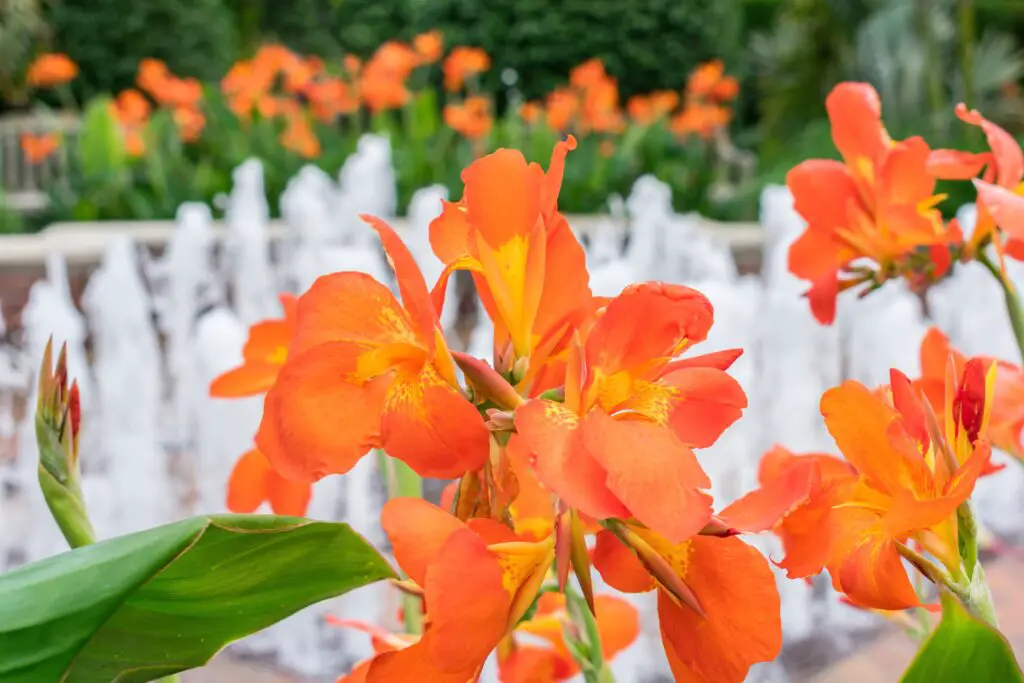
Signs of Browning Leaves
Canna lilies are beautiful plants that can add a tropical touch to any garden. However, if you notice that the leaves of your canna lilies are turning brown, it is a sign that something is not quite right. Brown leaves can be a sign of a variety of problems, including pests, diseases, and environmental stress.
One of the first signs that your canna lily leaves are turning brown is a change in leaf color. The leaves may start to turn yellow or brown around the edges before the entire leaf turns brown. In some cases, the brown color may be limited to certain parts of the leaf, while in other cases, the entire leaf may turn brown.
Different Stages of Leaf Browning
If you notice that your canna lily leaves are turning brown, it is important to pay attention to the different stages of leaf browning. In the early stages, the leaves may simply appear wilted or droopy. As the problem progresses, the leaves may become crispy or brittle, and they may start to curl or twist.
In some cases, the brown leaves may fall off the plant entirely, leaving behind bare stems. This can be a sign that the problem is severe and requires immediate attention. If you notice that your canna lily leaves are turning brown, it is important to act quickly to identify the underlying cause and take steps to address it.
Canna Lily Leaves Turning Brown – 3 Common Problems
Canna lily leaves turning brown can be a sign of various issues, including pest infestations, diseases, fungal infections, and environmental factors. Understanding the underlying cause can help gardeners take appropriate measures to prevent further damage to the plant.
1. Pest Infestation
Several pests can cause canna lily leaves to turn brown. Caterpillars, aphids, slugs, and snails are some of the most common culprits. Leaf rollers and thrips can also damage the leaves, causing them to turn brown and die.
Gardeners can inspect the leaves regularly for signs of pest infestation. If pests are detected, they can be removed by hand or treated with insecticidal soap or neem oil. It is essential to follow the instructions carefully and avoid using too much insecticide, which can harm the plant.
2. Diseases and Fungal Infection
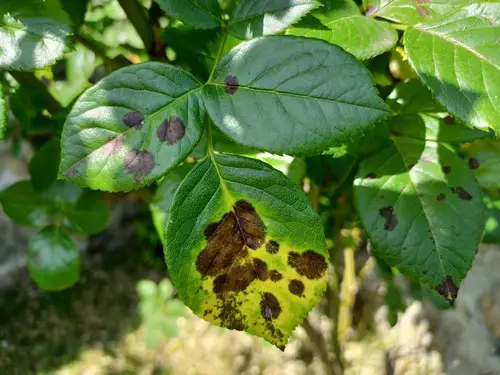
Bacterial leaf spot and canna rust are two common diseases that can cause canna lily leaves to turn brown. Fungal infections like leaf spot or rust can also damage the leaves, causing them to brown and die.
Gardeners can prevent diseases and fungal infections by ensuring proper air circulation and avoiding overcrowding of plants. Infected leaves should be removed immediately and disposed of properly to prevent the spread of disease.
3. Environmental Factors
Environmental factors like overwatering, underwatering, and exposure to extreme temperatures can cause canna lily leaves to turn brown. Waterlogging can also lead to root rot, which can cause the leaves to brown and die.
Gardeners can prevent environmental factors from damaging the plant by ensuring proper drainage and watering practices. They can also protect the plant from extreme temperatures by providing shade during hot summer days and covering the plant during cold winter nights.
Impact of Watering
Canna lilies require adequate moisture to thrive, but improper watering can cause the leaves to turn brown. In this section, we will discuss the impact of watering on canna lily leaves and how to avoid common watering mistakes.
Overwatering
Overwatering is one of the most common causes of canna lily leaves turning brown. When the soil is constantly wet, it can lead to root rot, which can cause the leaves to turn brown and mushy. To prevent overwatering, ensure that the soil is well-drained and avoid frequent watering.
To check if your canna lily is overwatered, gently dig into the soil with your finger. If the soil is soggy and waterlogged, it is a sign of overwatering. In such cases, reduce the frequency of watering and allow the soil to dry out between watering sessions.
Underwatering
Underwatering can also cause the leaves of canna lilies to turn brown. When the soil is too dry, it can lead to dehydration and wilting of leaves. To avoid underwatering, ensure that the soil is moist but not waterlogged.
To check if your canna lily is underwatered, gently dig into the soil with your finger. If the soil is dry, it is a sign of underwatering. In such cases, increase the frequency of watering and ensure that the soil is moist but not waterlogged.
Role of Sunlight
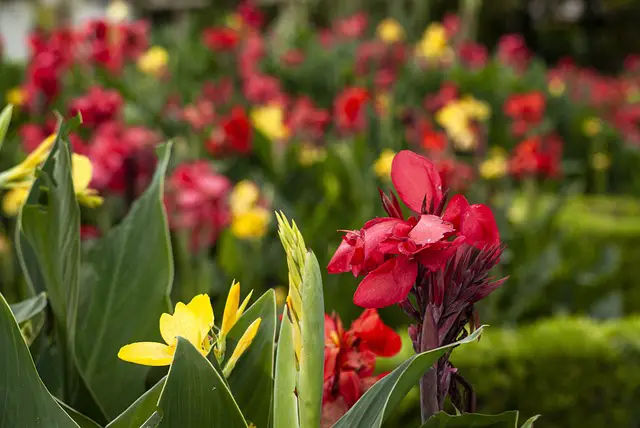
Sunburn
Canna lilies love warm weather, humidity, and summer sun. However, too much direct sunlight can cause sunburn on the leaves, which can turn them brown. If the leaves are getting too much direct sunlight, they will start to turn yellow and then brown.
Sunburned leaves will be dry, crispy, and may have a burnt appearance. The leaves will usually start to curl up and eventually fall off.
To prevent sunburn, it is important to provide partial shade during the hottest part of the day. If the canna lilies are in a pot, move them to a spot where they can get some shade during the hottest part of the day.
If they are planted in the ground, consider planting them near a tree or other tall plant that can provide some shade during the hottest part of the day.
Lack of Adequate Sunlight
On the other hand, if canna lilies are not getting enough sunlight, the leaves can also turn brown. Lack of sunlight can cause the leaves to become weak and vulnerable to pests and diseases. If the leaves are not getting enough sunlight, they will start to turn yellow and then brown. The leaves will usually be soft and may start to droop or wilt.
To prevent lack of sunlight, it is important to plant canna lilies in a spot where they can get at least 6 hours of direct sunlight each day. If the canna lilies are not getting enough sunlight, consider moving them to a sunnier spot.
Nutrient Deficiency
Canna lilies require a balanced supply of nutrients to maintain healthy foliage. A lack of essential nutrients can lead to browning of the leaves. Regularly fertilizing the plants with a balanced, slow-release fertilizer can help provide the necessary nutrients.
Nitrogen Deficiency
Nitrogen is one of the essential nutrients required by canna lilies. A lack of nitrogen in the soil can lead to yellowing of leaves, stunted growth, and browning of the leaves.
Nitrogen is an essential component of chlorophyll, which is responsible for the green color of leaves. Without enough nitrogen, the plant cannot produce enough chlorophyll, which leads to yellowing of leaves.
To correct nitrogen deficiency, apply a balanced fertilizer that contains nitrogen. Blood meal, fish meal, and bone meal are good sources of nitrogen for canna lilies. Nitrogen is also available in the form of ammonium nitrate and urea.
Lack of Other Essential Nutrients
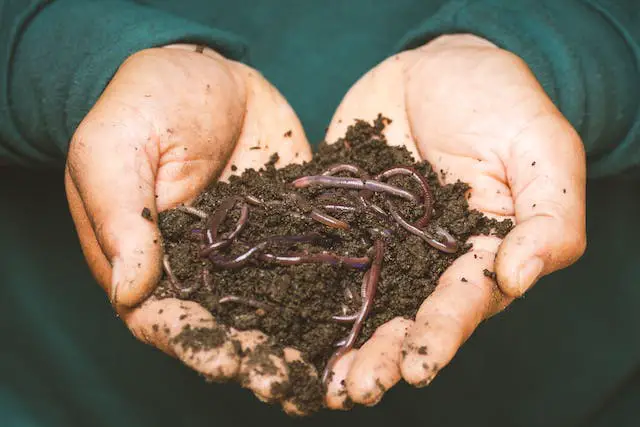
Apart from nitrogen, canna lilies require other essential nutrients like phosphorus, potassium, calcium, and magnesium. A lack of these nutrients can also lead to browning of the leaves.
Phosphorus is essential for root development, while potassium is necessary for flower development. Calcium and magnesium are required for overall plant health.
To correct nutrient deficiencies, apply a balanced fertilizer that contains all the essential nutrients. A soil test can help identify which nutrients are lacking in the soil and how much fertilizer is required to correct the deficiency.
Prevention and Treatment
Using Fungicides and Insecticides
When it comes to treating canna lilies, it’s important to identify the underlying cause of the problem before choosing a treatment method. If the leaves are turning brown due to a fungal disease, using a fungicide can help to prevent further spread.
Copper-based fungicides are effective against fungal diseases such as rust and leaf spot. These products can be found at most garden centers and should be applied according to the manufacturer’s instructions.
In addition to fungal diseases, canna lilies can also be affected by insect infestations. Organic insecticides such as neem oil can be used to control pests such as aphids and spider mites. Neem oil is a natural product that is safe to use around children and pets.
Chemical insecticides can also be used to control pests, but they should be used with caution and according to the manufacturer’s instructions.
Proper Plant Care
Prevention is always better than cure, so it’s important to take steps to prevent canna lilies from developing problems in the first place. Proper plant care is key to keeping canna lilies healthy and vibrant. Here are some tips for proper plant care:
- Fertilization: Canna lilies are heavy feeders and require regular fertilization to thrive. Use a balanced fertilizer every four to six weeks during the growing season.
- Watering: Canna lilies require regular watering, especially during hot, dry weather. Water deeply once a week, making sure the soil is moist but not waterlogged.
- Soil: Canna lilies prefer well-draining soil that is rich in organic matter. Amend the soil with compost or other organic matter to improve drainage and fertility.
- Sunlight: Canna lilies require full sun to thrive. Choose a location that receives at least six hours of direct sunlight per day.
- Air circulation: Good air circulation is important for preventing fungal diseases. Plant canna lilies with plenty of space between them to allow for good air circulation.
Caring for Canna Lilies in Winter

Preparing for Dormancy
As winter approaches, canna lilies will naturally enter a period of dormancy. To prepare for this, it is important to cut back the foliage to about 4-6 inches above the ground. This will help prevent any diseases from spreading and reduce the amount of energy the plant needs to maintain its leaves during the winter months.
It is also recommended to dig up the rhizomes (the underground stem that produces roots and shoots) after the first frost. This will help protect them from freezing temperatures and prevent any damage that may occur from frost heaving.
Once the rhizomes have been dug up, they should be cleaned and inspected for any signs of disease or damage. Any damaged or diseased rhizomes should be discarded to prevent the spread of infection.
Winter Care
After the rhizomes have been cleaned and inspected, they should be stored in a cool, dry place for the winter. Some gardeners prefer to store them in peat moss or vermiculite to help retain moisture and prevent them from drying out. Others prefer to store them in plastic bags with a few ventilation holes to prevent them from rotting.
It is important to check on the rhizomes periodically throughout the winter to ensure they are not drying out or rotting. If they appear to be drying out, they should be lightly misted with water. If they appear to be rotting, they should be discarded immediately to prevent the spread of infection.
In addition to storing the rhizomes, it is also important to protect the soil where the canna lilies were growing. This can be done by adding a layer of mulch to the soil. Mulch will help insulate the soil and protect it from freezing temperatures. It will also help retain moisture and prevent the soil from drying out.
Choosing the Right Environment
When it comes to growing canna lilies, choosing the right environment is crucial to prevent the leaves from turning brown. Here are some factors to consider when creating the ideal environment for your canna lilies.
1. Soil Type
Canna lilies prefer well-draining soil that is rich in organic matter. The soil should be moist but not waterlogged, as waterlogged soil can lead to root rot and brown leaves. If you’re growing canna lilies in a pot, make sure the pot has drainage holes to allow excess water to escape. It’s also a good idea to add some sand or perlite to the soil mix to improve drainage.
2. Air Circulation
Good air circulation is essential to prevent canna lily leaves from turning brown. Stagnant air can lead to fungal diseases and insect infestations, which can cause the leaves to brown and wither.
If you’re growing canna lilies in a container, make sure there is enough space between the plants to allow for good air circulation. In a garden, avoid overcrowding the plants and prune any nearby foliage to improve air flow.
3. Plant Spacing
Proper plant spacing is crucial to prevent overcrowding and ensure good air circulation. If the canna lilies are too close together, they may compete for nutrients and water, which can lead to brown leaves.
In a garden, space the plants at least 2 to 3 feet apart to allow for proper growth. In a container, plant only one canna lily per pot, and choose a pot that is at least 12 inches in diameter.
Conclusion
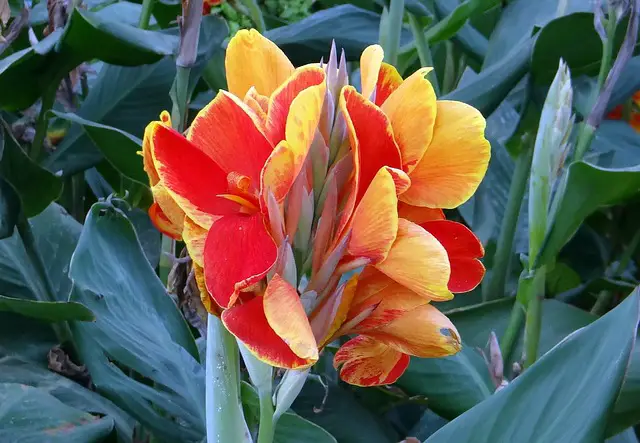
Canna lilies are exotic and vibrant flowering plants that require proper care to maintain healthy growth. Brown leaves are a common issue that canna lily owners face, and there are several causes for this problem. Overwatering, underwatering, pests, diseases, and winter weather are some of the most common reasons for canna lily leaves turning brown.
To prevent overwatering, it is important to ensure that the soil is well-drained and to avoid frequent watering. On the other hand, underwatering can lead to dry and brown leaves. Thus, it is important to maintain consistent watering and check the moisture level of the soil regularly.
Pests and diseases can also cause brown leaves. Spider mites, slugs, and snails are some common pests that can damage canna lily leaves. Rust disease is another issue that can cause brown spots on the leaves.
To prevent these problems, it is important to regularly inspect the plants and take appropriate action if any pests or diseases are detected.
Finally, winter weather can cause canna lily leaves to turn brown and die back. This is a natural process, and the plant will go into hibernation during this time. It is important to remove the dead leaves and wait for the plant to come back to life during the spring season.
Frequently Asked Questions
What causes brown spots on canna lily leaves?
Brown spots on canna lily leaves can be caused by a variety of factors, including fungal diseases, bacterial infections, and environmental stressors. Overwatering, poor drainage, and high humidity can also contribute to the development of brown spots on canna lily leaves.
To prevent brown spots, ensure that your canna lilies are planted in well-draining soil and avoid overhead watering.
Why are my canna lily leaves turning yellow and brown?
Canna lily leaves can turn yellow and brown due to a lack of water, nutrient deficiencies, or exposure to extreme temperatures. Overwatering can also cause the leaves to turn yellow and brown.
To prevent this issue, water your canna lilies when the top inch of soil feels dry to the touch, and fertilize them regularly with a balanced fertilizer.
What are common problems with canna lily leaves?
Common problems with canna lily leaves include fungal diseases, bacterial infections, and insect infestations. Environmental stressors such as high humidity, extreme temperatures, and poor soil conditions can also cause problems with canna lily leaves.
To prevent these issues, plant your canna lilies in well-draining soil, provide them with adequate water and sunlight, and practice good garden hygiene.
How often should I water my canna lily?
Canna lilies prefer moist soil, but they can be susceptible to root rot if they are overwatered. To prevent this issue, water your canna lilies when the top inch of soil feels dry to the touch. In hot, dry weather, you may need to water your canna lilies more frequently to keep the soil moist.
How do I revive a struggling canna lily?
To revive a struggling canna lily, first identify the cause of the problem. If the leaves are turning yellow or brown, the plant may be underwatered or overwatered.
Adjust the watering schedule accordingly. If the leaves are wilting, the plant may need more water or may be suffering from a fungal disease. Treat the plant with an appropriate fungicide. If the plant is not producing new growth, it may be time to divide and replant it.
What does canna lily rust look like?
Canna lily rust is a fungal disease that causes orange or brown spots on the leaves. The spots may be surrounded by a yellow halo and can cause the leaves to become distorted or deformed.
To prevent canna lily rust, plant your canna lilies in well-draining soil and avoid overhead watering. If your plants are infected, treat them with a fungicide and remove any infected leaves or plants to prevent the spread of the disease.

Hey, I’m Lisa and I’ve been an avid gardener for over 30 years. I love writing, talking and living in the garden! Feel free to connect with me on my socials below

